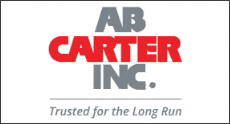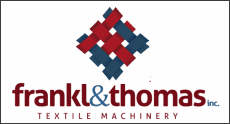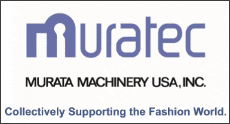
Posted January 15, 2020
By Devin Steele (DSteele@eTextileCommunications.com)
WELLFORD, S.C. – Warptek, LLC opened for business in 2002 – a tenuous time for the U.S. textile industry, of course – to provide commission sectional warping services to the industry.
At its start, only one machine was housed in the 30,000 square-foot leased facility, making it appear cavernous – and left Managing Partner and company President Peter Adolf hoping to one day in the near future fill the space with more machines, i.e. more business.
“It was really empty,” recalled Adolf, whose staff at the time comprised only a creel hand and an operator. “I was scratching my head wondering what the heck did I do?”
What he did wasn’t just out of the blue take the proverbial leap of faith. Having recognized that a niche was needed for sectional warping – a specific process in weaving preparation that reaps numerous benefits – Adolf, a minority partner, and fabric maker Mermet, the majority owner, had core commitments from several companies that helped make the decision easier
France-based Mermet had moved to the U.S., opening an operation in the same county, around the same time, and was looking to source warping services rather than invest in that type of equipment. So joining forces with Adolf, they decided to pull the trigger on the venture.
But, still … one machine wouldn’t cut it long-term, he said. So he wrote “snail mail” letters – 10 of them – targeting potential customers and complementary suppliers to the textile industry to pitch Warptek’s unique services.
“From those letters, we got enough feedback and work orders to be full in the first year,” said Adolf, a Switzerland native who moved to the U.S. in 1995 and previously served as president of Benninger Corp., the Spartanburg, S.C.-based U.S. subsidiary of Switzerland-based weaving preparation, finishing and tire cord machinery production OEM Benninger AG.
A technically oriented professional with years of experience in the sector already, Adolf was also able to leverage his name and reputation in the industry to attract new customers then, and the business has continued to grow. Even during the Great Recession, the company was able to remain stable, and it has never had layoffs due to economic downturns, he said.
“We tried to be diversified to whom we approached, not just going after the big customers,” he said. “We really focused on having a lot of accounts, including smaller ones. Their work is often the most demanding, but we are able to do it. We have our up and downs, but it's a totally different cycle than the rest of the textile industry.”
Today, Warptek operates with five machines, including a recently acquired Jakob Müller direct warper for various applications, particularly narrow fabrics. Its services go into numerous other applications, including industrial, automotive, composites/ballistics, architectural and consumer. The company employs about 23 people on three shifts, five days a week.
“We’ve come a long way since I first started 16 years ago,” said Tom Phillips, who is over sales and customer relations. “We were strictly a sectional warping operation and evolved to now offer direct beaming capabilities. And there is a multitude of materials that we’ve run over that time period. There's very little that we won't try. We know what we won't run and that's textured glass, carbon and wire.”
Among those fibers that have crossed through Warptek’s creels and beams are ceramic, various aramids, nylon, polyester, basalt, PTFE, Nomex®, Innegra™ and Spectra®, Phillips said.
“Many of those are difficult materials to process, but we've been very successful with them,” he said.
Diversification follows strong start
About a year after its opening, Warptek was able to invest in a second machine to fill growing business needs and to serve as a backup in case the original warper, a Benninger BenTronic, went down, Adolf said. The company brought in a third machine, a Benninger Supertronic, in 2008; a fourth, a KARL MAYER Ergotech, in 2011; and the Jakob Müller direct warper last year.
The company also added 17,400 more square feet of space in 2011, putting it at about 47,000 square feet today. And it’s fully climate controlled, which is important in this type of production process, Adolf said.
Warptek, which opened four months after 9/11, saw a strong pickup in business when the War on Terror began a couple of years later, he said. It supplied numerous weavers with warps for geotextile and ballistic applications, but that business shrunk after a few years, he said.
“It was significant business for us,” Adolf said. “We were happy to be part of the effort to keep troops safe. And our team saw the importance in what we were doing – not just for military, but also for police forces. For us, it is on a need-to-know basis. We didn’t need to know what the end application is, and most of the time, we didn’t and we still don’t. That is between our customers and their customers. But we provided warps in a consistently high quality, and I'd like to think we were participating in saving lives.”
Today, the company offers a much more diverse product mix, particularly general industrial applications. Its largest customer is still Mermet, which continues to grow in the architectural area with its sun control fabrics, and Warptek has one machine dedicated to that business, Adolf said.
Three employees who joined the company in its first year remain, including James Cochran. In those early days, Adolf was handling sales AND technical issues, and Cochran was able to progress from creel hand to production planning to production manager to soon become Adolf’s “right-hand man,” he said.
After a few years in business, Phillips and Gilbert Vonlanthen were hired, bringing “incredible skills” to the table, Adolf said. Phillips was hired as a “freelance” salesman in 2005 and joined the company full time in 2007. Vonlanthen, also a Switzerland native who previously worked at Sulzer and Benninger, was hired in 2008 to move and install the third machine and, once the installation was complete, was hired as plant technician.
“We were getting too big with four machines and we needed a better solution for our ‘growing pains,’ or rather our new opportunities,” Adolf said.
“Tom is a salesman and a natural sales engineer,” he added, referring to Phillips, a University of South Carolina grad. “And Gilbert is a factory-trained technician with great technical knowledge of the machinery.”
All of its warping machines have been modified over the years due to process optimization and customization to meet customer needs, he said. Vonlanthen’s and Adolf’s technical knowledge were instrumental in the realization of these modifications, Phillips said.
Adolf calls Warptek’s marketing and customer relations efforts “relationship management.”
“We try to have good relationships with everyone in the industry,” he said. “I often get asked for solutions for certain applications. You don't always get an immediate payback, but you help people, you talk to people and you bring people together. I really like to do that. I'm very technically driven. Technical change fascinates me. Sometimes I may do a little bit more than I perhaps should from an economic standpoint, but it’s gratifying still. You earn that reputation working with and helping others, and our reputation is our biggest sales tool.”
An essential value proposition for Warptek is quick turns, Adolf added. Standard turnaround time is 10 days and, if needed, can be faster, he said.
“That is clearly one of the most important things since we don’t have products and product lifecycles,” he said.
In addition, Warptek offers customization and flexibility in warping that perhaps is one of its biggest differentiators in the market, Adolf said.
“With that flexibility, there is a lot of know how that goes into setting up the machine,” he said. “Normally a sectional warper is custom built for a certain application. For us as a commission warper, our machines are built for high flexibility. So our machines still look a little bit different than the machines that a typical plant may have. There is a focus on flexibility, where we can do a lot of different things on the same machine as a textile plant would on a machine specific for their application.”
Finding and retaining talent is a challenge, as it is for most manufacturers these days, but Warptek is fortunate to have a good number of longtime employees, Phillips said. And the company has benefited from the low unemployment rate in a peculiar way, he added.
“What's really interesting is we have a sound customer base, and we become more successful as our customers become successful,” he said. “We've had customers' businesses growing, which is awesome for us. We have that every year, but recently it seems to be more profound. What we've found is, our market has shifted a little bit because of our unemployment rate being so low. We have customers who have sectional warping machines, but they can't find operators to run them. So they're using us as their backup source. That's not going to be a forever, long-lived thing, but with the unemployment rate as it is, you don't know how long it's going to be because not that many people are interested in getting into textiles anymore.”
Unique capabilities, environment
Cochran, whose wife Carol has also worked at Warptek since the early days, called it a “great company” to work for, with a well-qualified team and terrific leadership.
“What we do here is really unique,” he said. “Peter is a good man to work for, and his knowledge and background, along with that of Gilbert and Tom in sectional warping, make it a very special company.”
Phillips credited Adolf’s technical experience and leadership skills in helping to make the company successful.
“He's 100 percent Swiss,” said Phillips, laughing, who introduced Adolf to his future wife in the late 1990s. “He's smart. What I appreciate about Peter is when he hires somebody to do a job, he expects them to do the job. He doesn't micro-manage them. He expects you to execute what he said you can do. We have been through a lot to together in the industry, so it's a great fit. He's really been more of a friend than a manager to me.
“He has a great reputation in the industry,” he continued. “I admire and respect his knowledge of sectional warping and weaving and his ability to be creative. He has given Warptek opportunities in other markets by designing the S-Wrap or modifying the machines so that we can direct warp. We do a lot of things we aren't supposed to be able to do. And you have to have expertise to do that.”
Phillips added that Warptek is fortunate to have such a leader, which is one reason job retention is high at Warptek.
“Fortunately, we don't need a lot of hands-on management,” he said. “Peter is always trying to think about what we can do next. In a salesman's position, you're always stressed out because you either don't have enough business or stressed out because you have too much business, and you're worried about getting deliveries and disappointing your customers. But we've been very lucky and blessed. We have a stable workforce now and we've been trying to get new ones in. But our core associates are great. We just need to find more. We could have more capacity if we could get more operators who are dependable and reliable.”
Vonlanthen, who has been in the U.S. about three decades, brought not only warping and weaving experience to the company, but spinning as well, he said.
“I like it here,” he said. “Peter gives me all the room I need. They keep me busy – sometimes day and night. Whatever it takes to get the job done.”
Machine operator Sonia Harris didn’t have a textile background when she joined the company six years ago, but she said she wasn’t intimidated when she saw creels with 800-plus positions when she walked in.
“I told myself I was going to learn this," she said. “And I fell in love with it. I try to do that best I can and put out the best quality possible.”
One machine operator who asked to remain nameless did have a textile background when she joined the company 13 years ago, so she knew her way around yarns and fibers, she said.
“I wasn't used to this kind of style, but once I learned it, it became fun,” she said. “We have a lot of new customers and we learn their styles and what they want. We try to focus on quality over quantity. We want everything to be up to par for our customers so they'll keep coming back.”
Michael Rice, a creel hand, joined the company about three years ago after his now fiancé, Harris, told him how great a place Warptek was to work, he said.
“I was optimistic when I came here because I try to have a positive attitude, and I picked up on the job pretty well,” he said. “I love the company. Everybody here gets along, and it's good that it’s not such a big company. And we also have a great leader.”
Machine operator Doris Johnson has been with the company 15 years. She previously ran a direct warper at another company, so Warptek was a good fit, she said.
“I had experience, which helped,” she said. “It's great working here. Everybody gets along and it's an easy-going job. Sometimes we're pushed to get the job done and sometimes it's easier.”
With such a positive attitude among employees, great leadership, reliable and robust machinery, a niche service and a growing customer base, things are looking up for Warptek, according to Phillips.
“I think we have a bright future,” he said. “We just have to keep working at it to continue to improve and grow.”
Warptek continues to roll along at, well, warp speed


Peter Adolf (L) and Tom Phillips in the Warptek facility

Tom Phillips (L) and Peter Adolf

Doris Johnson

Peter Adolf (L) and Tom Phillips in the Warptek facility











